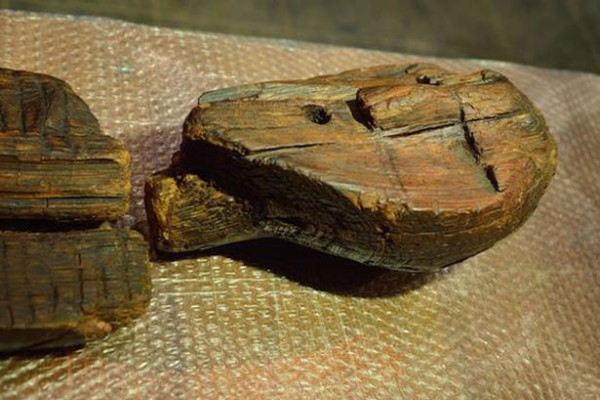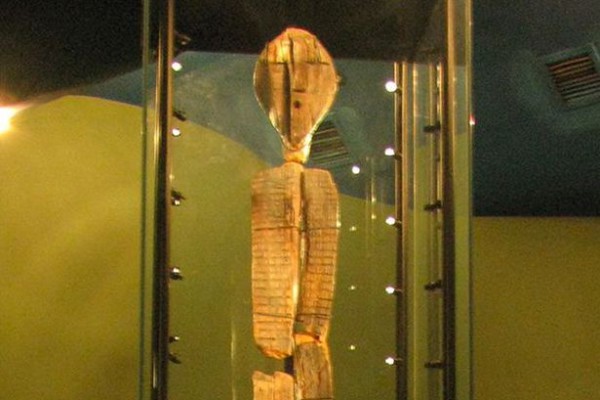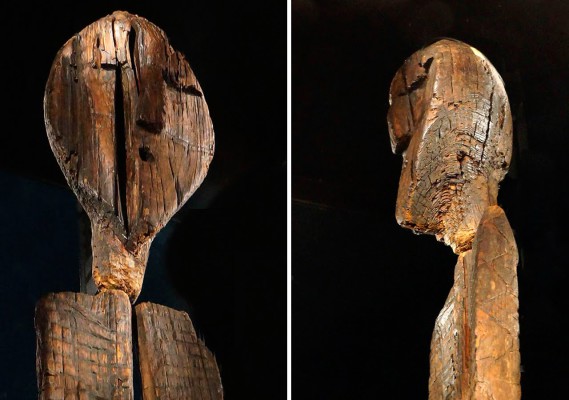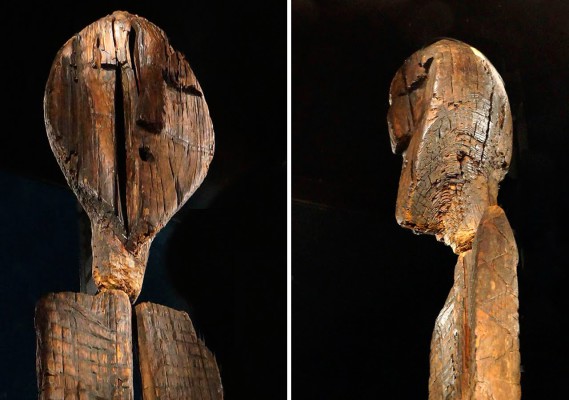In 1890 a wooden idol standing over five metres tall was excavated from a Siberian bog, Shigir, on the eastern slopes of the Ural Mountains, nearly 100 kilometres from Yekaterinburg. Archaeologists were working in the area as prehistoric artefacts had been found during in an open cast gold mine operation.
The bog, with its anaerobic environment, had preserved the idol almost perfectly and it was extracted by Professor D. I. Lobanov. Currently it stands nearly three metres tall as parts of the original idol were lost during the political upheaval in Russia in the last century. All that remains of the missing lengths are the drawings made by the Siberian archaeologist Vladimir Tolmachev.
The idol has a three dimensional carved head atop a long rectangular body. The body is covered with intricate patterns and faces. The first attempt to date this artefact using radiocarbon analyses was undertaken in 1997, when its age was placed at 9,500 years old. This dating caused disputes amongst the scientific community so several miniscule particles were recently removed and sent to Germany for more accurate dating using Accelerated Mass Spectrometry. It is now understood that the idol is around 11,000 years old.
What would the world have looked like when this idol was carved? It was during what is known as the Mesolithic era, which occurred right at the end of the ice age. It was characterised by very unsettled weather patterns as the air slowly started to warm. With the retreat of the glaciers and the gradual warming, sea levels rose and forests began to appear. This all resulted in a major redistribution of plants and animals. Hunters would have targeted deer, aurochs, elk, goats and sheep. Women would have collected nuts, acorns and other plants, as well as shellfish if they lived near the coast. Humans started to make tools by chipping rocks but these were small and restricted to simple tools such as axes, arrow heads and points for sticks. They would have chopped down trees to build shelters and the first crude canoes were found. Domestication of animals had started and people lived in communities instead of wandering in groups. This start of civilisation also led to people decorating objects, and Mesolithic art was based upon geometric designs with a small range of colours – red ochre being the dominant colour. Artefacts such as painted pebbles, ground stone beads, and pierced shells have been found.

This was the environment in which the creators of the Shigir idol lived. They chopped down a larch tree that was at least 157 years old, as determined by the growth rings that are visible. They used simple stone tools to shape a three dimensional head and a rectangular body at least five meters tall. They then carved seven faces into the body along with a beautiful geometric pattern.
The head has a clear face with eyes, nose, and mouth but the geometric markings on the body have never been deciphered by modern man. There are horizontal lines where the thorax of a body would be and a broken chevron pattern covers the rest of the body, along with several faces that are visible along the length of the sculpture. It is assumed that the patterns are prehistoric man’s attempt to pass on their knowledge in the only manner they understood. (Mail Online)
Other scholars believe that the straight lines could denote the horizon. Or perhaps it has spiritual connotations and denotes the border between land and sky, or this world and the next. The wavy lines could denote water or something as simple as a snake; if this is an esoteric piece perhaps it is symbolic of a snake denoting evil. Does the front and the back of the idol denote different worlds, or is one for childhood and one for adults? Perhaps Mesolithic man was trying to tell the story of creation as he understood it. There is no way of knowing, as there is no other written record from this time and no way to compare and decipher the meanings.

To place this in context, this wonderful artefact is twice as old as the Egyptian pyramids and three times as old as Stonehenge. It is a magnificent piece of art that entailed an enormous amount of work for people that had crude tools and must have spent a considerable portion of their day in finding food. It also shows that culture, civilisation, and art were prominent in this area thousands of years before we thought they were.
Not only do we stand in awe of this sculpture, we must ask why it ended up in a swamp. We can only hope that this was done purposefully, to ensure that the knowledge held by this people was passed on to others. We can only speculate, but one thing is clear – this idol represents a significant effort on behalf of the people that created it.

